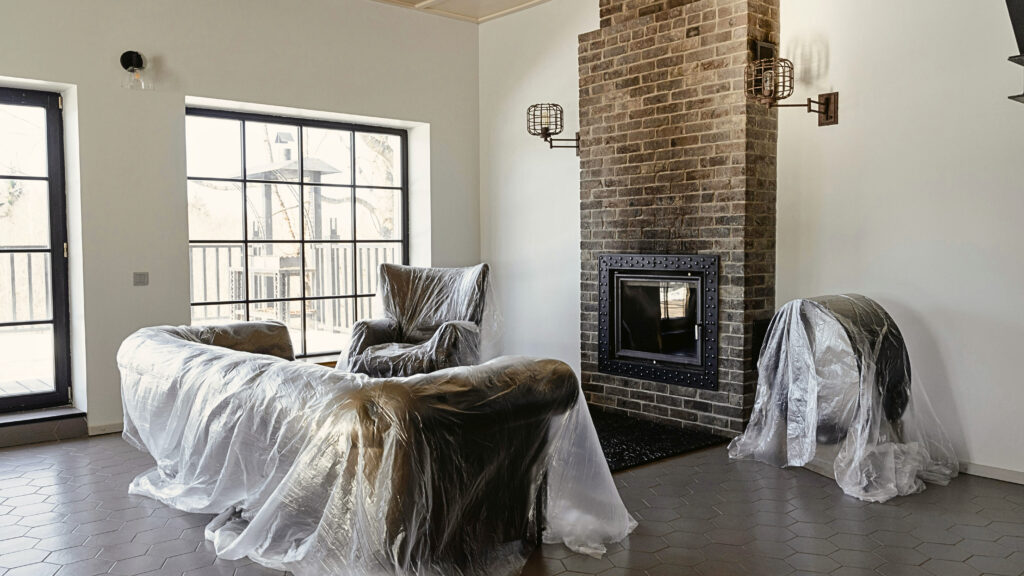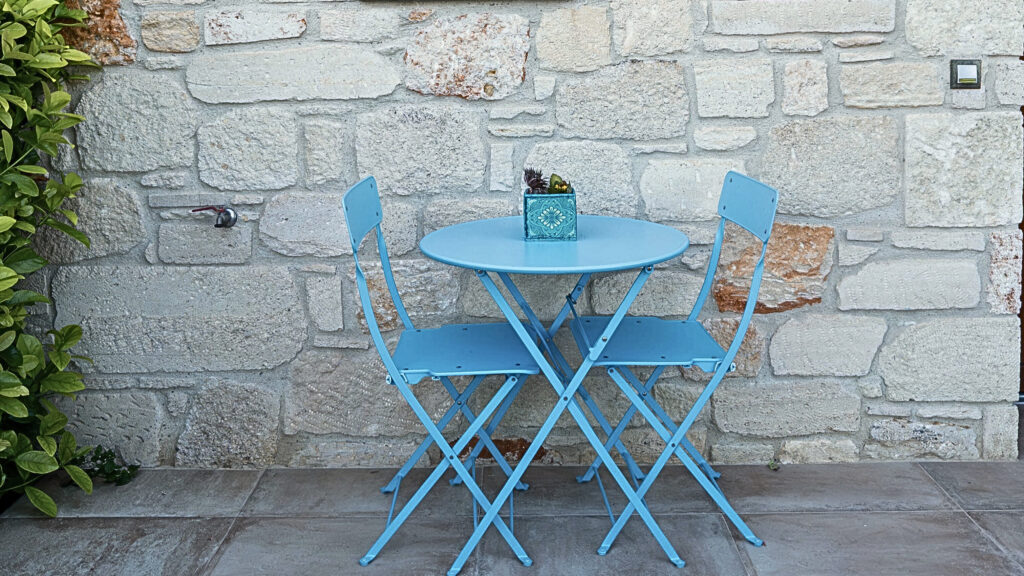Practical steps to maintain your brick patio’s look and durability with easy, effective care tips.
Charlotte’s tricky weather puts brick patios through the wringer. Rain, heat, and those random freezes we get mean homeowners need to stay on top of driveway pavers and general maintenance.
Key Takeaway
- Regular cleaning and weed removal prevent damage and preserve appearance.
- Re-sanding joints and sealing bricks protect against erosion and stains.
- Timely repairs and proper drainage extend the patio’s lifespan.
Just Keep it Clean
Grab a broom. That’s your first line of defense. Sweep off those leaves and dirt before they can settle in and cause problems. Sometimes hosing it down works great too. And yeah, you could use a pressure washer, but don’t go crazy with the power setting – nobody wants to blast their mortar away. Just water and maybe some dish soap usually does the trick. (1)
Dealing with Weeds
Weeds can pop up between the bricks in no time. Here’s how to tackle them:
Pull Them Out
- Root removal: When you see weeds, pull them out by the roots. It’s easier to do this when the soil is moist, like in the morning.
- Vinegar solutions: Some people use vinegar to kill weeds. You can spray a vinegar solution on them, but be careful not to get it on other plants.
Use Weed Killers
- Regular weed killer: If vinegar doesn’t work for you, consider using a weed killer. Just make sure it won’t harm your bricks. Always read the label and follow the instructions.
Sand Between the Bricks
The sand between the bricks helps hold them in place. Over time, this sand can wash out. Here’s what to do:
Re-sand When Necessary
- Check the sand: If you notice gaps where the sand has washed away, it’s time to add more.
- Polymeric sand: This type of sand hardens when wet and is worth the investment. It helps prevent weeds and keeps the bricks stable.
Sealing Your Patio
Sealing your brick patio is like putting on sunscreen. It shields the bricks from weather damage. (2)
When to Seal
- Every few years: Plan to seal your patio every 3 to 4 years. This keeps the bricks looking fresh and guards against stains.
- Dry conditions: Always wait until the patio is completely dry before you apply the sealer.
Choosing a Sealer
- High-quality products: Pick sealers made just for brick.
- Water-based sealers: These are usually easier to spread and better for the environment.
Fixing Small Issues

Credits : Pexels.com (Photo by Mart Production)
Small problems with your brick patio can lead to bigger issues if not addressed quickly. Keeping an eye on the condition of your patio is important for its longevity. Here’s a simple guide on how to fix common issues like cracks and loose bricks.
Cracks in the Brick or Mortar
When it comes to maintaining your patio, spotting cracks early can save you from bigger headaches down the road. Both the bricks and the mortar that holds them together are vulnerable to wear and tear. Regular inspections help you catch small problems before they escalate.
Identify the Cracks
Start with a close visual inspection of your patio. Pay attention to any cracks you see in the bricks or the mortar joints. Small cracks are usually manageable, but larger ones might require more effort. A simple way to gauge the size is to see if a quarter fits into the crack if it does, it’s time to take action.
Repairing Cracks
For minor cracks, repair caulk is an effective and easy solution. Here’s a straightforward approach to fixing them:
- Clean the Area: Remove dirt and debris using a brush or vacuum to ensure good adhesion.
- Apply the Caulk: Fill the crack completely by squeezing the caulk into it, then smooth it out with your finger or a tool so it’s flush with the surface.
- Let It Cure: Follow the manufacturer’s drying instructions, usually a few hours, before using the patio again.
Loose Bricks
Loose bricks not only look unsightly but can also be a safety hazard. It’s important to identify and fix them promptly to maintain a sturdy patio surface.
Identify Loose Bricks
You can usually tell if a brick is loose by walking on your patio and feeling for any movement. Another sign is visible gaps between the bricks and mortar, indicating the mortar has worn away.
Fixing Loose Bricks
Securing loose bricks involves removing old mortar and resetting the brick with fresh mortar. Here’s how to do it:
- Remove Old Mortar: Carefully chip away the crumbling mortar around the loose brick using a chisel or similar tool.
- Mix New Mortar: Prepare a small batch according to the package instructions.
- Apply the Mortar: Fill the gaps with the fresh mortar using a trowel, pressing firmly to create a solid bond.
- Set the Brick: Place the brick back and press gently to ensure it’s level with surrounding bricks.
- Let It Cure: Allow the mortar to dry completely, which may take a day or two depending on weather conditions.
Replacing Damaged Bricks
Sometimes a brick is too damaged to repair and must be replaced. This process keeps your patio looking good and structurally sound.
Steps to Replace a Brick
- Remove the Damaged Brick: Carefully remove the mortar around the brick with a chisel or hammer, then take out the brick.
- Insert a New Brick: Fit a new brick snugly into the empty space.
- Reapply Mortar: Fill the gaps around the new brick with fresh mortar, just as you would when resetting a loose brick.
Drainage Issues
Credits : Adventures and Stuff
Water accumulation on your patio can lead to long-term damage if not properly managed. After it rains, always check for puddles or standing water. This is a clear indicator that your patio may have drainage problems. One way to fix this is by regrading the surrounding area so water naturally flows away from your patio surface. For more serious drainage concerns, consider how proper gravel patio drainage and patio gravel slope can help manage water flow effectively.
- Check for standing water after rain.
- Regrade the patio surroundings to improve water flow.
- Install French drains or other drainage solutions if needed.
Protecting Your Patio
Heavy weight on your brick patio can cause bricks to crack, shift, or become uneven. To prevent this kind of damage, avoid parking vehicles or placing heavy equipment on the patio. If you’re planning a new patio and want to understand expenses, consider factors like material prices, labor charges, and site preparation when calculating the cost to install paver patio.
- Never park cars or trucks on the patio.
- Avoid placing heavy machinery or equipment on the bricks.
- Use garages, sheds, or driveways for heavy storage.
- Limit the total weight during gatherings.
Using Pads, Coasters, and Lightweight Furniture
Furniture and planters can also cause damage if their weight isn’t evenly distributed. To protect your patio, always use rubber pads or coasters under furniture legs to spread the load. Large planters should be placed on coasters or trays, making them easier to move and preventing direct pressure on the bricks. When selecting outdoor furniture, keep weight in mind and consider lightweight options or pieces with wheels for easier mobility.
- Use rubber pads under furniture legs.
- Place large planters on coasters or trays.
- Choose lightweight furniture for your patio.
- Consider furniture with wheels or casters for easy movement.
Regular Maintenance Tips
Keeping your patio in good condition requires regular inspection and maintenance. Look for cracks or uneven surfaces and address any damage quickly to avoid bigger problems. Cleaning your patio regularly removes dirt and debris that can hide issues. Adding edging around the patio helps keep soil and grass from creeping in. If you notice sand gaps between bricks, re-sand them to stabilize the surface and prevent shifting.
- Inspect for cracks or uneven areas regularly.
- Clean your patio to spot problems early.
- Install edging to prevent soil or grass intrusion.
- Re-sand gaps between bricks to keep them in place.
Conclusion
By following these essential maintenance tips, Charlotte homeowners can keep their brick patios looking beautiful and functional for years to come. Regular cleaning, weed control, joint re-sanding, sealing, and repairs will ensure that your outdoor space remains a welcoming environment for family and friends. With the right care, your brick patio can serve as a lovely gathering spot for many seasons ahead. If you encounter specific issues or need tailored advice based on your patio’s condition, don’t hesitate to seek expert guidance. For a personalized brick patio maintenance guide, reach out to our team today. Happy maintaining!
FAQ
What are the first steps I should take when maintaining my brick patio?
To effectively maintain your brick patio, start by regularly inspecting it for any signs of wear or damage. Look for loose bricks or cracks in the joints. Next, clear away debris like leaves or dirt that can trap moisture. Regular sweeping is essential. Additionally, consider washing the patio with a gentle cleaner to prevent staining and preserve its appearance over time.
How can I prevent weeds from growing in the joints of my brick patio?
Weeds can be a persistent problem in brick patios, but there are effective ways to manage them. First, apply a weed barrier fabric during the initial installation. This will help block sunlight. Regularly inspect the joints and remove any weeds by hand or with a weeding tool. You can also use a vinegar solution to deter weed growth without harming the bricks.
What is the best way to clean my brick patio without causing damage?
Cleaning your brick patio requires a gentle approach to avoid damage. Start with a broom or leaf blower to remove loose debris. For deeper cleaning, use a mixture of warm water and mild soap. A soft-bristle brush can help scrub away stains without scratching the surface. Avoid harsh chemicals, as they can degrade the bricks. Rinse thoroughly with water after cleaning.
How often should I seal my brick patio, and what products work best?
Sealing your brick patio is crucial for protection against moisture and stains. It’s generally recommended to seal the patio every two to three years, depending on the weather conditions in your area. Look for high-quality sealants specifically designed for brick. Water-based sealers are often easier to apply and safer for the environment. Follow the manufacturer’s instructions for the best results.
What signs indicate that my brick patio needs repairs?
Several signs can indicate that your brick patio requires repairs. Look for cracks in the joints or bricks that have become loose or uneven. If you notice pooling water after rain, it may suggest drainage issues. Additionally, faded colors or stains can signal that the bricks need cleaning or sealing. Addressing these issues promptly can prevent more extensive damage in the future.
Related Articles
- https://lapispatios.com/driveway-pavers/
- https://lapispatios.com/articles/paver-patio-cost-per-square-foot/
- https://lapispatios.com/articles/gravel-patio-installation/
References
- https://www.homesandgardens.com/solved/things-people-with-clean-patios-always-do
- https://www.yahoo.com/lifestyle/simple-outdoor-feature-add-major-153000048.html

